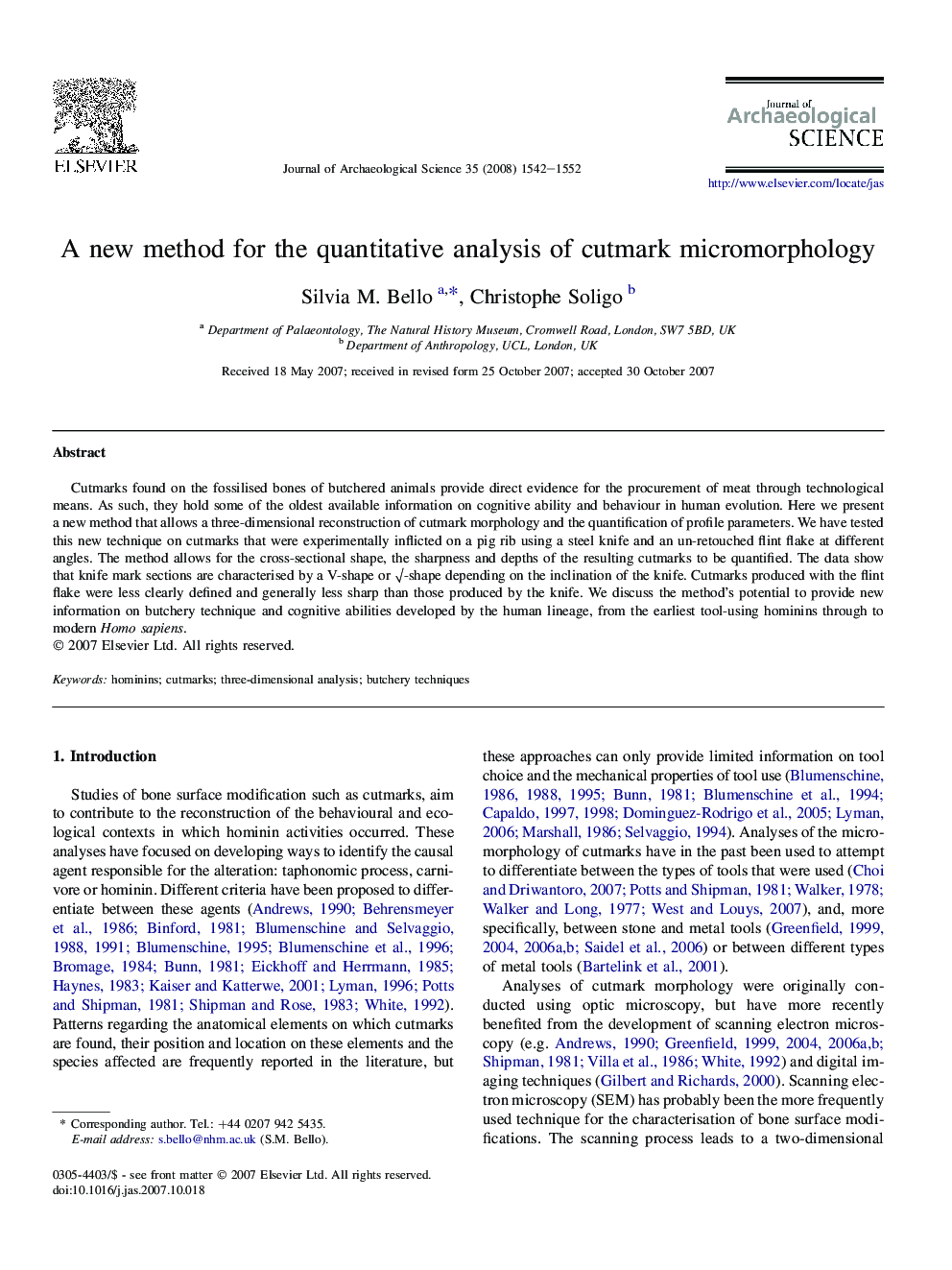| Article ID | Journal | Published Year | Pages | File Type |
|---|---|---|---|---|
| 1037479 | Journal of Archaeological Science | 2008 | 11 Pages |
Cutmarks found on the fossilised bones of butchered animals provide direct evidence for the procurement of meat through technological means. As such, they hold some of the oldest available information on cognitive ability and behaviour in human evolution. Here we present a new method that allows a three-dimensional reconstruction of cutmark morphology and the quantification of profile parameters. We have tested this new technique on cutmarks that were experimentally inflicted on a pig rib using a steel knife and an un-retouched flint flake at different angles. The method allows for the cross-sectional shape, the sharpness and depths of the resulting cutmarks to be quantified. The data show that knife mark sections are characterised by a V-shape or √-shape depending on the inclination of the knife. Cutmarks produced with the flint flake were less clearly defined and generally less sharp than those produced by the knife. We discuss the method's potential to provide new information on butchery technique and cognitive abilities developed by the human lineage, from the earliest tool-using hominins through to modern Homo sapiens.
